Rating index:
Extraordinary (96-100)
Outstanding (93-95)
Very good to Excellent (89-92)
Above average to Good (86-88)
Below Average to Average (80-85)
Avoid (below 80)
More info >
Extraordinary (96-100)
Outstanding (93-95)
Very good to Excellent (89-92)
Above average to Good (86-88)
Below Average to Average (80-85)
Avoid (below 80)
More info >
Germany currently has no fewer than 39 2-star restaurants and in the 2017 guide for Germany the city of Frankfurt was featured with two 2-star restaurants, Tiger-Gourmetrestaurant and Restaurant Lafleur, both part of the the Tiger Palmen Gruppe. Tiger-Gourmetrestaurant was awarded its second Michelin star in November 2013 (2014 guide). Executive chef at the time was Andreas Krolik (b.1974), who not long after, in March 2015, became executive chef at the then one Michelin starred Lafleur and that same year Michelin bestowed a second star on the restaurant (2016 guide). This was the third time a restaurant with Andreas Krolik at the helm had been awarded a second star by Michelin Germany, the first time being at Park-Restaurant (Brenners Park Hotel) in Baden-Baden back in 2010 (2011 guide).

(courtesy of Lafleur)
Lafleur is open for dinner Tuesday through Saturday and for lunch from Wednesday till Friday. The restaurant offers an a la carte menu (starters €29-€54, mains €50- €62, desserts €23-€25) and there's a multi-course tasting menu (4 courses €138, 5 courses €148, 6 courses €158, 7 courses €168), including a full vegetarian option (4 courses €122, 5 courses €133, 6 courses €144). At lunchtime there are also special lunch menus available. There's the 3-course "Menu du Jour" (€54) and the 3-course "Gourmet" lunch menu (€58 or €48 for the vegetarian option). I had lunch at Lafleur in December 2016 and I ordered a 5-course tasting menu.

Lunch started with an intricate amuse bouche with various preparations of Jerusalem artichoke, like crisps, puree, crunchies, and marinated diced Jerusalem artichoke, different types of bitter leaves, such as frisée and red chicory, two pieces of wels (catfish) liver and finally some Jerusalem artichoke and liver ice cream. Attractive flavours and textures, the liver adding a touch of foie gras-like luxury, and the bitter leaves delivered a nice contrast. An excellent start of the meal.
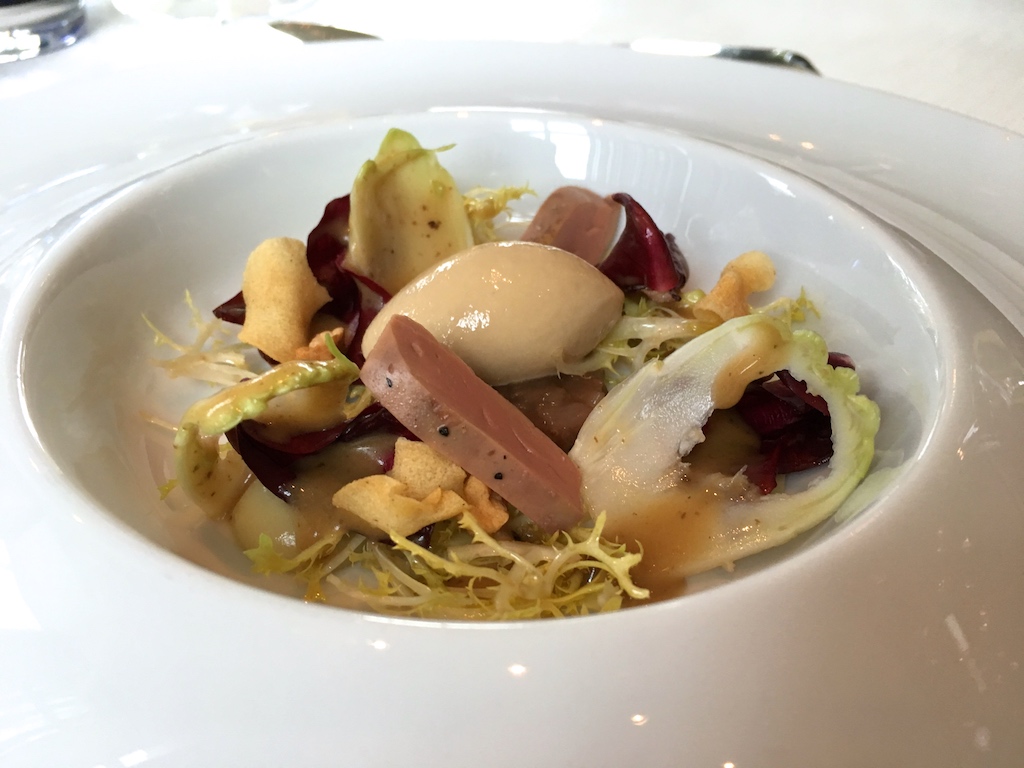
First course of the tasting menu was beautifully translucent raw langoustine (flattened and lightly marinated) with a subtle seasoning of lime, and decorated with finely diced marinated cucumber, hazelnut powder, a few teaspoons of caviar, and deliciously creamy and milky burrata ice cream. Hidden underneath the caviar were little blobs of concentrated langoustine puree (made with the roe and the shells). A beautifully balanced dish with precise flavours. Lovely fresh minerality from the cucumber and the hazelnut powder gave the dish a pleasant, unexpected edge.
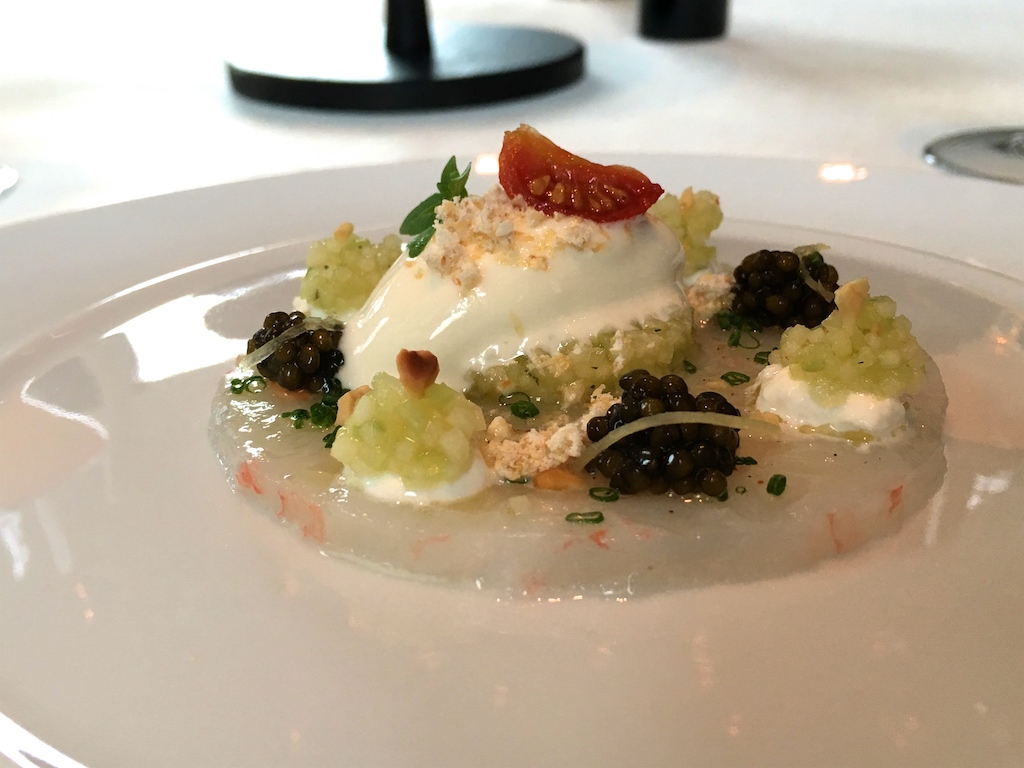
Next up was a plump and juicy hand-dived Scottish scallop with a thin hazelnut-macadamia crust, accompanied by some smooth and satiny pumpkin puree, a little pumpkin roll, two dots of fermented yuzu, a little sweet and sour pointy cabbage roll filled with finely diced parsley root, and a mild curry sauce. A glorious combination with rich and soothing flavours and just the right touch of freshness/acidity, and the curry sauce gave the dish a nice long finish. Great use of fermented yuzu too, a flavour I experienced for the first time. Fresh yuzu is wonderful, but it can also be quite a pungent flavour. The fermenting had softened the sharpness, resulting in milder but still characteristic yuzu flavours.
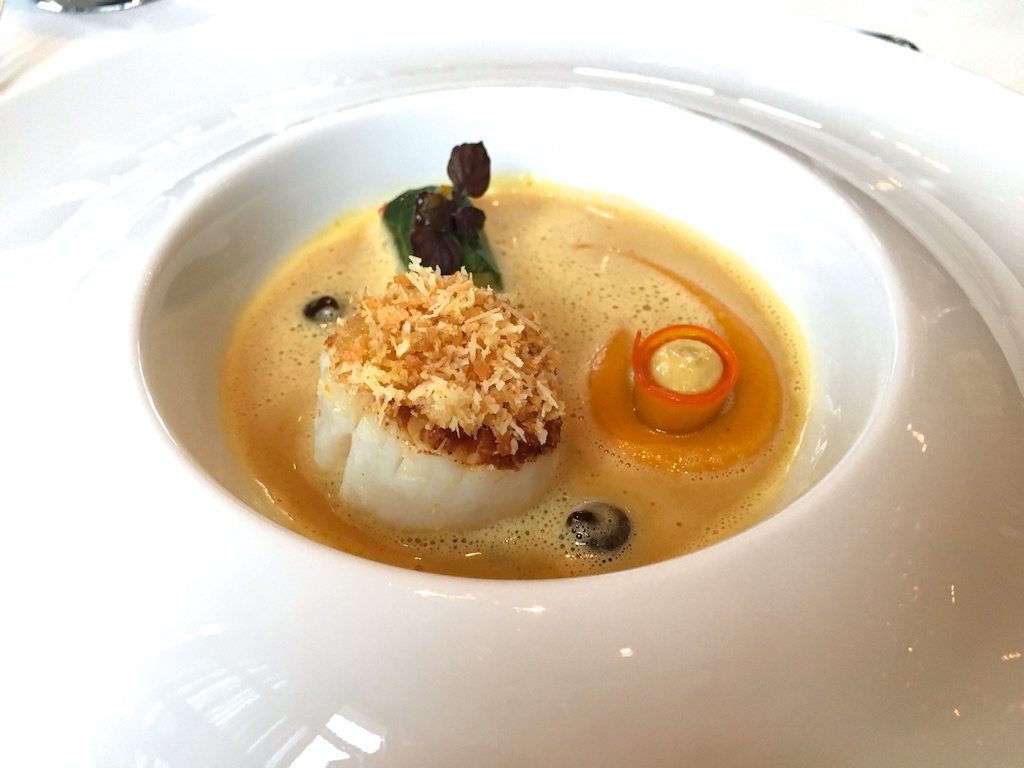
Third course was delicately poached fillet and leg of Bresse chicken served with an elegant poultry dashi. The fillet was placed on top of a mixture of savoy cabbage and carrot; the leg meat was garnished with some black truffle. Also on the plate was a delicious quenelle of chicken meat enriched with chicken liver, some potato puree topped with a soft and jammy egg yolk and some potato crunch for texture. A pleasing dish with sumptuous flavours, but the individual flavours still stood out and the poultry dashi brought a touch of elegance to the plate.

On to the main course. First up was sublime, perfectly clear venison bouillon served with a goose foie gras raviolo. Even better was the main act of expertly roasted saddle of venison with a delicious, peppery brioche crust, and served with cep puree, yellow beetroot, and a fantastic venison-red cabbage jus. An outstanding dish, executed with great finesse, but particularly excellent was the gently braised red cabbage, which had retained a lovely bite and the seasoning was spot-on, i.e. not overpowered by sugar or spicing. Equally well-seasoned was the the jus, the red cabbage adding a wonderful savoury sweetness.
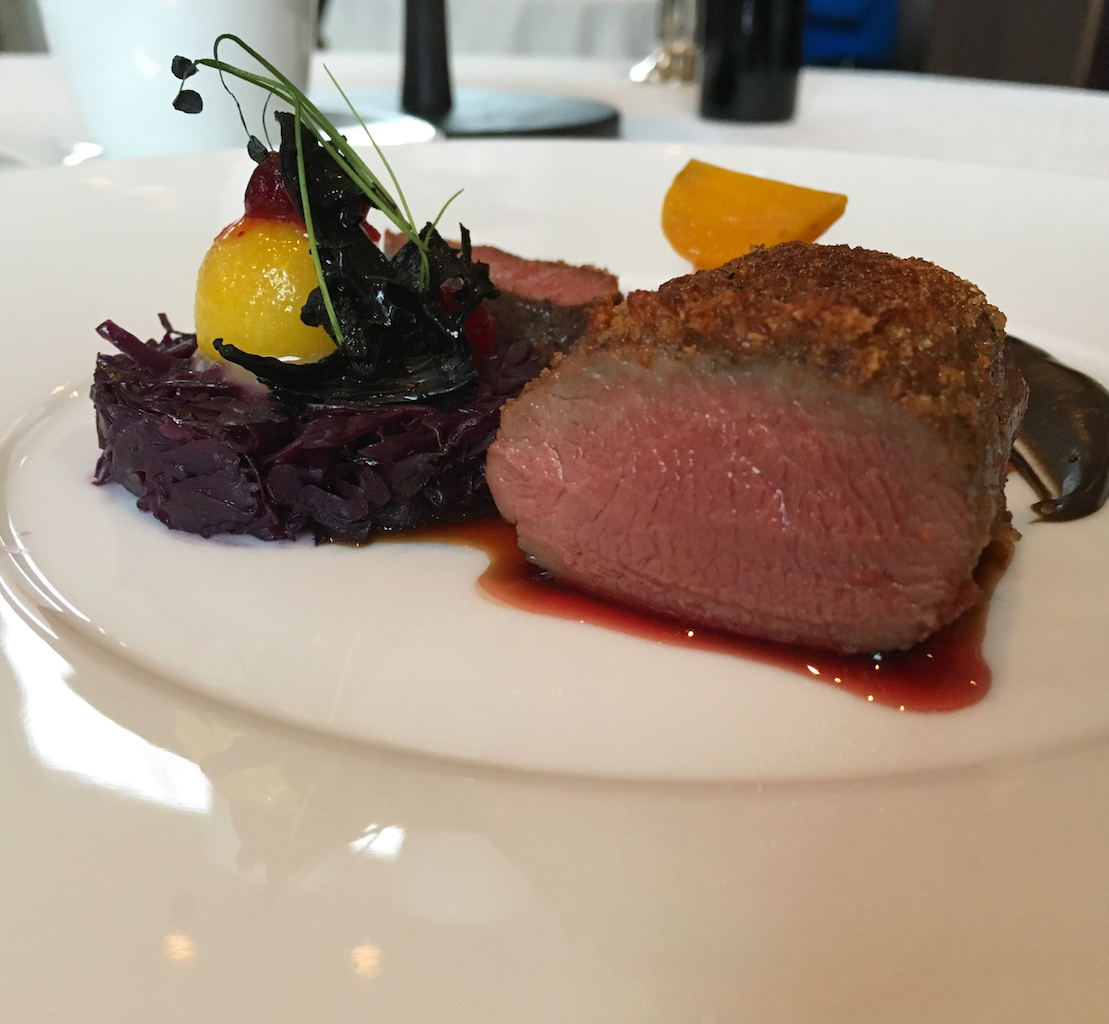
The meal continued with a citrussy pre-dessert of mandarin "ragout", pomelo granita and mandarin foam. A refreshing treat with lovely bitters. Dessert proper was an attractive combination of soft apple, "Schneider's Renette" (apple wine), skinned grapes, raisins and nut crumble, accompanied by a little tartlet with finely diced apple, apple foam and cinnamon, a bonbon with a fresh apple sorbet filling, and ice cream flavoured with red wine and butter. A delightful ending of this meal, striking just the right balance between sweetness, comfort and elegance.
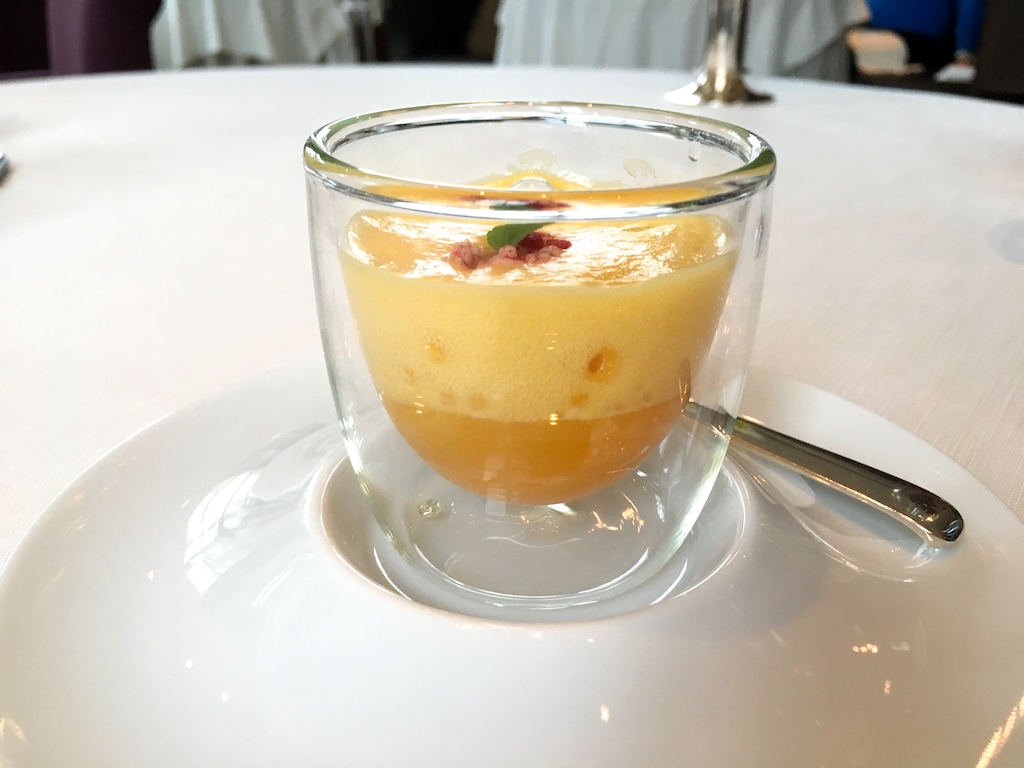

In the last decade or so, Germany has experienced a Michelin star boom with the number of two-star restaurants almost doubling in the 2012-2017 period. In my experience all German three-stars restaurants are solid, but in the two-star category the quality can be variable, ranging from restaurants barely cooking at one-star level to restaurants cooking at (almost) three-star level. My meal at Lafleur was a solid two-star experience, the restaurant delivered on all fronts today. The cooking is skilled and assured and modern/creative twists are attractively incorporated into it. The ingredients are exemplary and the flavours are sophisticated, balanced, and well-defined. The room is elegant; the service friendly and flawless. Lafleur is a textbook two-star restaurant.













